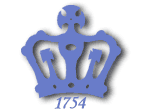|
|
 |
 |
 |
 |
|
ALUMNI CORNERCalming the WatersBy Brian Krisberg ’81 In late February, during a visit to my in-laws’ home in Philadelphia, the topic of my commitment to Columbia arose. My father-in-law, who is an intelligent and terrific person with no connection to Columbia other than me, looked at me sternly and, in an animated voice, said, “I certainly hope you’re reducing your commitment to Columbia this year.” His anger was directed at what he had read in newspapers and magazines about the short documentary film Columbia Unbecoming, prepared by The David Project. He was dead serious and not at all interested in discussing the serious and complex issues raised by the film. The primary issue, of course, is the charge by several students that they were intimidated by certain faculty members from the department of Middle East and Asian Languages and Cultures. This episode with my father-in-law got me thinking. Irrespective of the truth of what happened, there are many people with distant relationships to Columbia who are getting the wrong idea of what Columbia University stands for. Worse, there are potentially thousands of Columbia alumni, whose experiences were far different from those of students in the film, who could be forming negative opinions based upon sensationalistic media reports. The Ad Hoc Grievance Committee created by President Lee C. Bollinger has reported its findings (see page 3), after meeting with dozens of students, faculty, alumni and administrators. While the response to the report will run its course, there are a number of fundamental facts and principles that everyone connected to Columbia needs to keep in mind. These principles are timeless and valid regardless of one’s age or connection to Columbia, and represent the quintessence of what Columbia College and Columbia University — and any serious and self-respecting university — stand for.
Three facts are clear. First, from the controversy’s inception, the University’s official stated position has included: “Columbia University does not condone the intimidation of students or discrimination of any kind.” If intimidation or discrimination is found to have occurred, the University has made clear it will be dealt with. Second, as Columbia College Alumni Association President Robert Berne ’60 eloquently wrote in his letter to the editor (March CCT), the fact is that the charges leveled in the film contradict the experience of many Columbia students of all generations. On a personal level, the notion of intimidation in the classroom at Columbia is so foreign to me that I found it difficult to take press reports seriously for months after news of the film began to spread. Third, academic life at Columbia continues to be the school’s strongest attribute. In the College’s enrolled student survey conducted in winter 2004, 89 percent of the respondents were satisfied with the quality of instruction and 91 percent said they had been engaged intellectually at Columbia, higher evaluations than any other aspect of student life. Separate from these facts, there are a few key principles that have not received sufficient consideration in the media as the controversy has unfolded. First and foremost is the right of Columbia faculty members to govern their affairs. The Arts & Sciences faculty are professionals who should be given the opportunity to establish the standards of behavior for their profession. This is no different from what lawyers and doctors do, for example, in establishing codes of conduct for attorneys and members of the medical field. The self-examination process under way at Columbia should be viewed as a normal course of business effort to handle a potential breach of the behavioral standard. The A&S facultys deserve the respect of everyone who cares about Columbia when its determinations are announced. Second, faculty members aggressively challenging students must be viewed as a normal part of classroom activity and a method of encouraging students to think and be educated. A Columbia College education, through the Core Curriculum and elective courses, does not exist for students to confirm what they already know, but rather as an opportunity for undergraduates to develop their own views of ethics, politics and fairness in the world and learn how to think creatively and analytically. Restricting the ability of the faculty to challenge College students would be inconsistent with why students attend Columbia. Third is the need, in any emotionally charged debate, to withhold comment and action until the facts are established and communicated. Then the University can embark on the process of properly balancing the substantive issues at hand. These issues include the faculty’s right to free speech inside and outside the classroom (indeed, their academic freedom to challenge as a tool to elicit opinion) and their pedagogical responsibility not to make students feel that their point of view is unwanted (or, worse, feel intimidated). I believe that the University’s consideration of these three principles has guided its response to the controversy. We should not underestimate how, through this episode, the University has learned a number of important realities about areas that need to be improved upon. These include Columbia’s public relations effort, which needs to be more proactive in responding to the unreasonable and even wild attacks leveled in the media attacks (that no alum should believe), and the grievance procedures for registering complaints about classroom situations, which need to be more transparent and better understood by the Columbia community. These issues are being addressed.
|
|
||||||||||||||||||||||||||||||||||||||||||||||||||||||